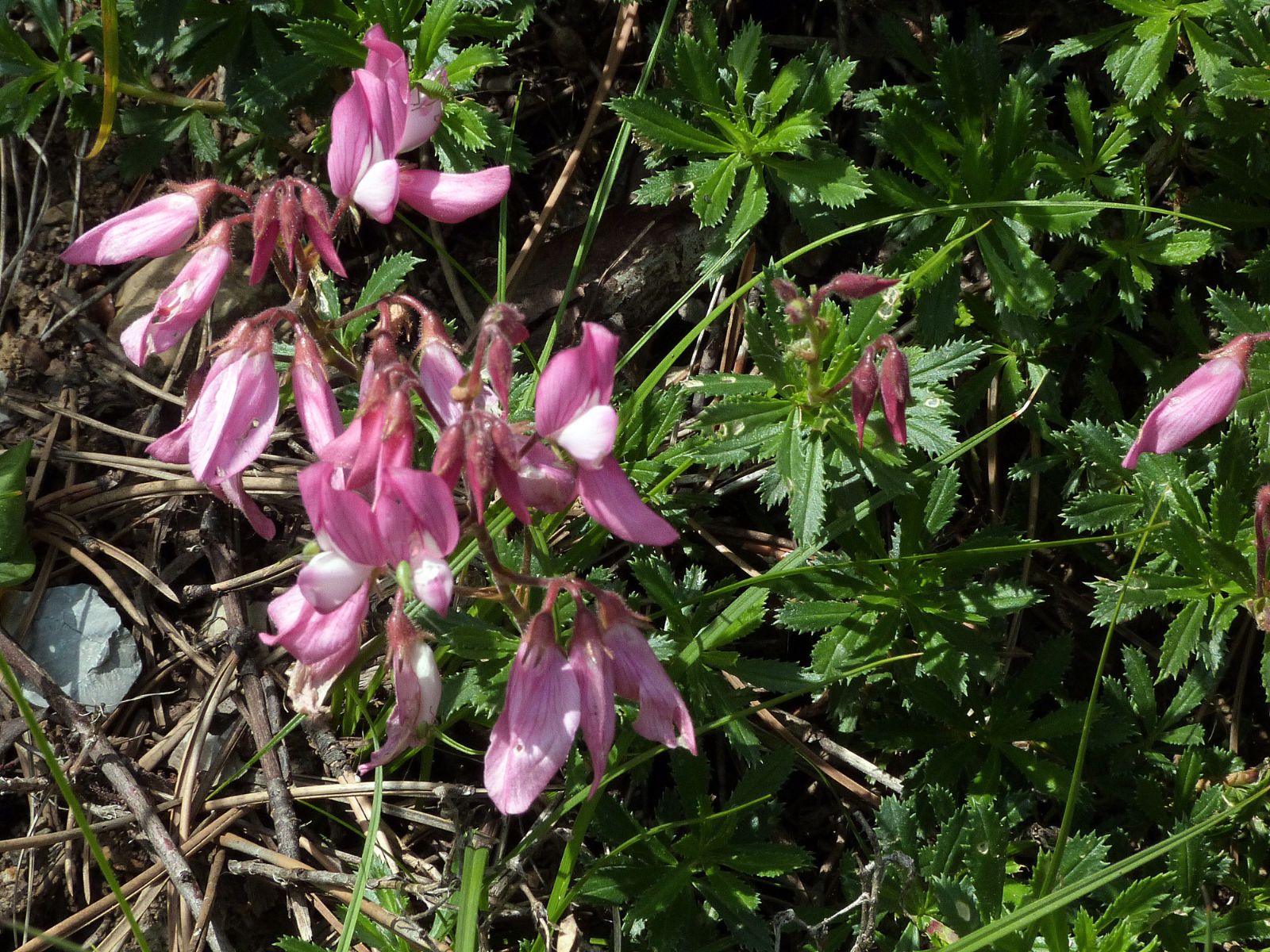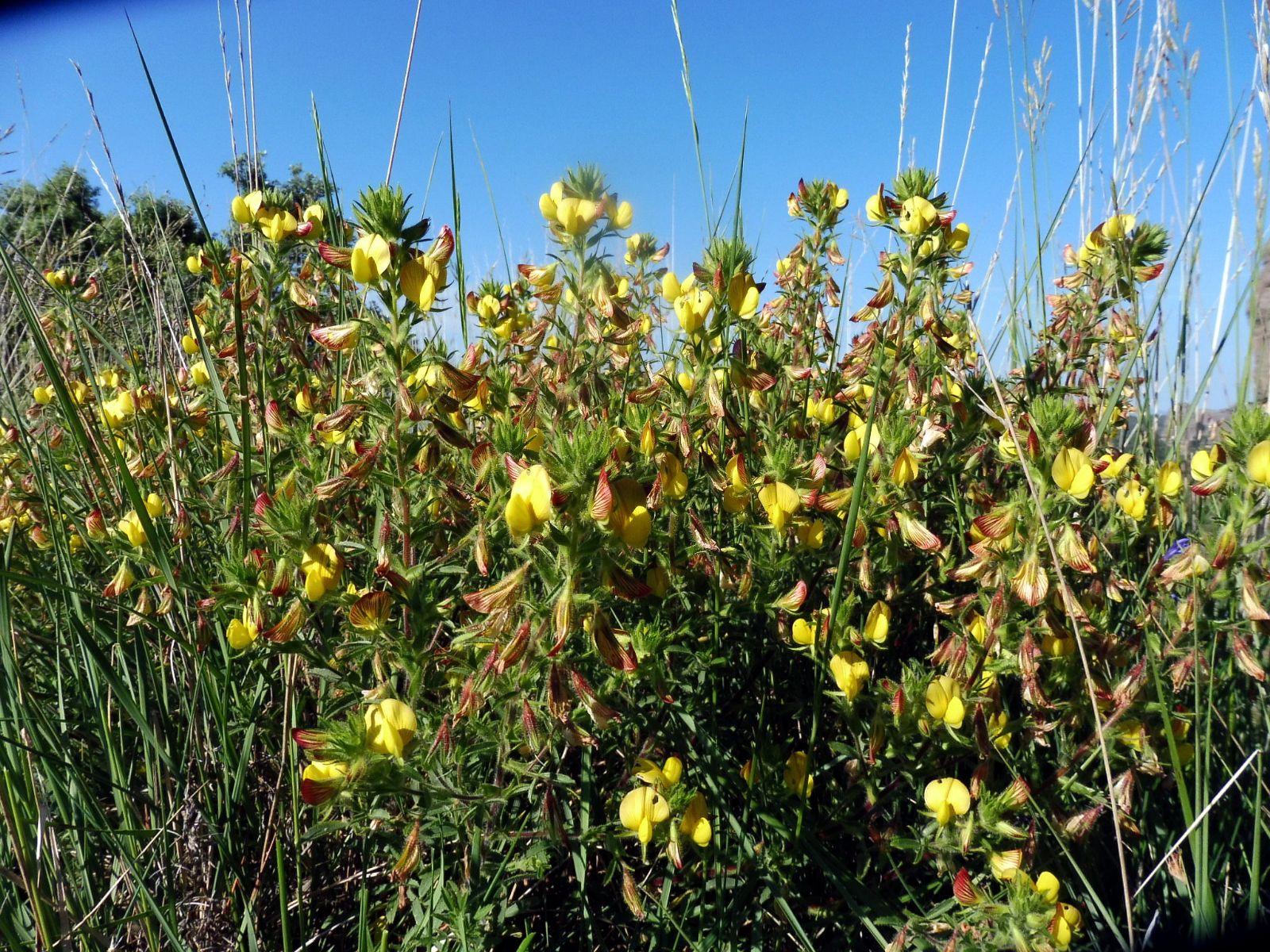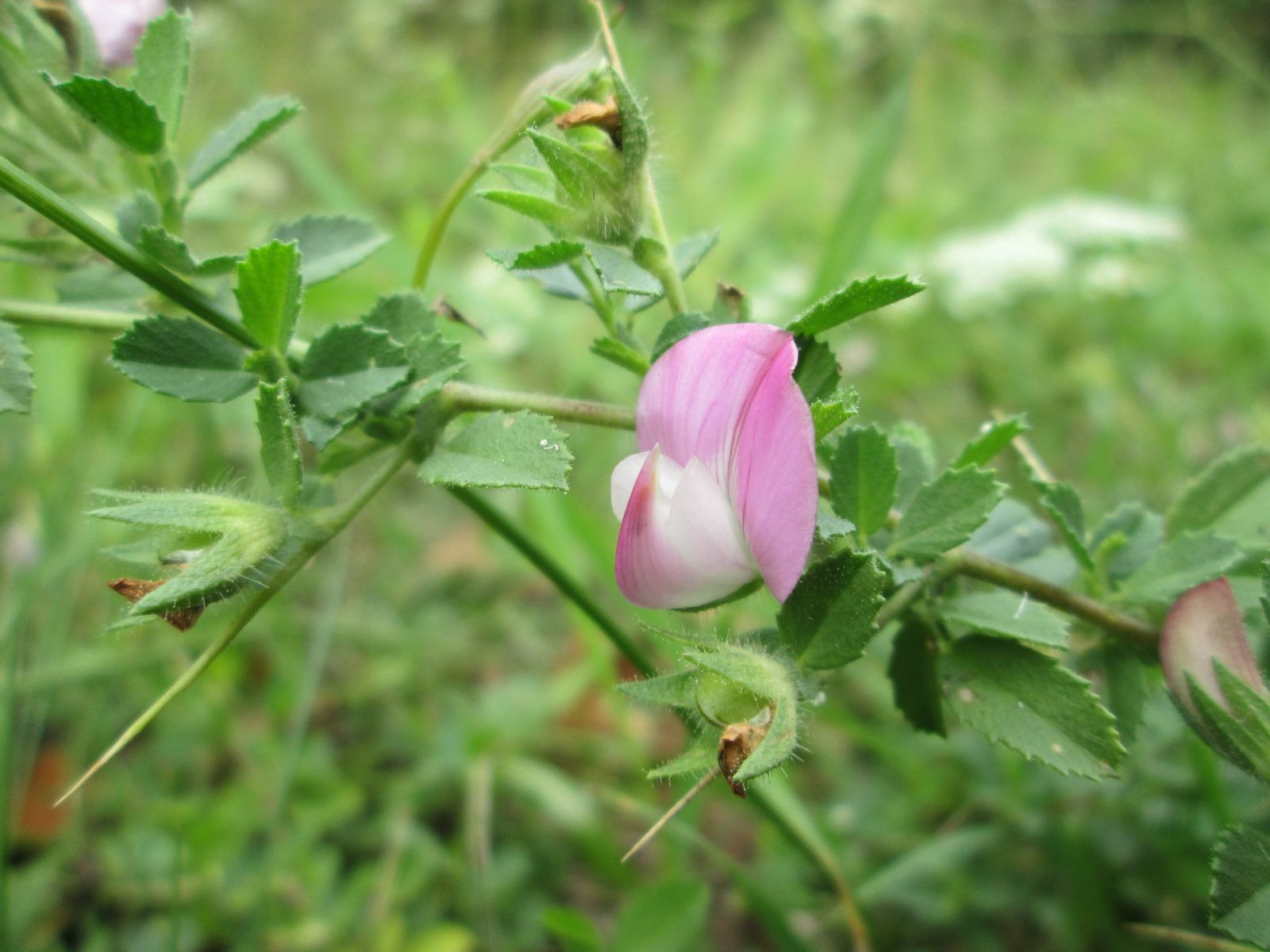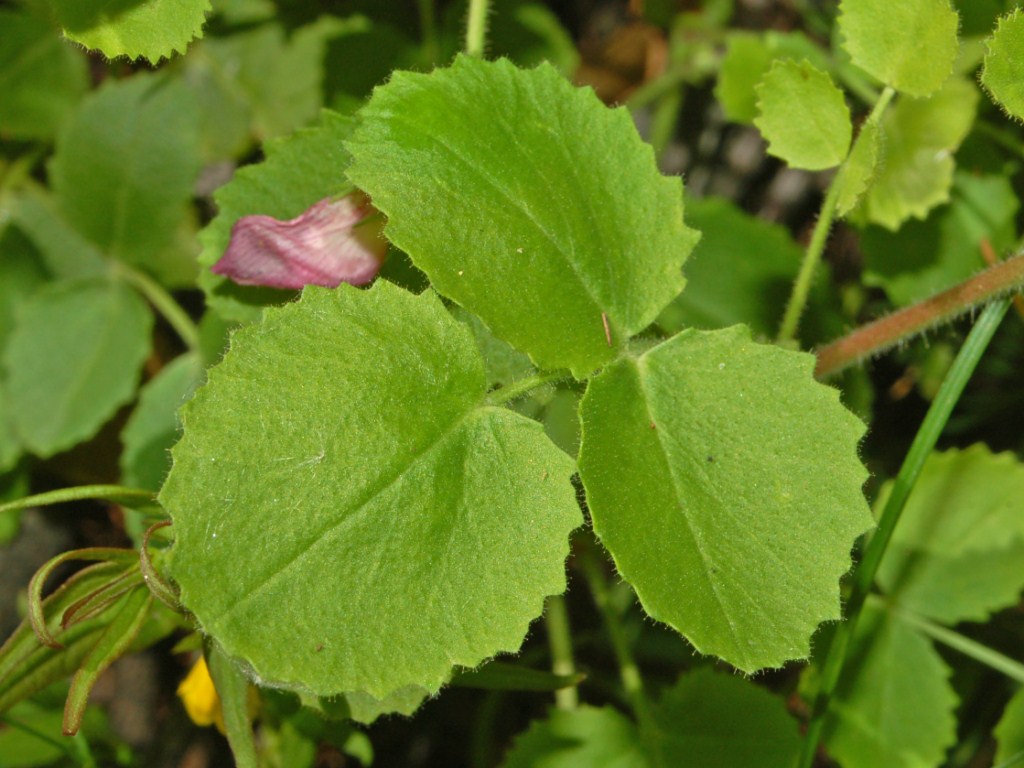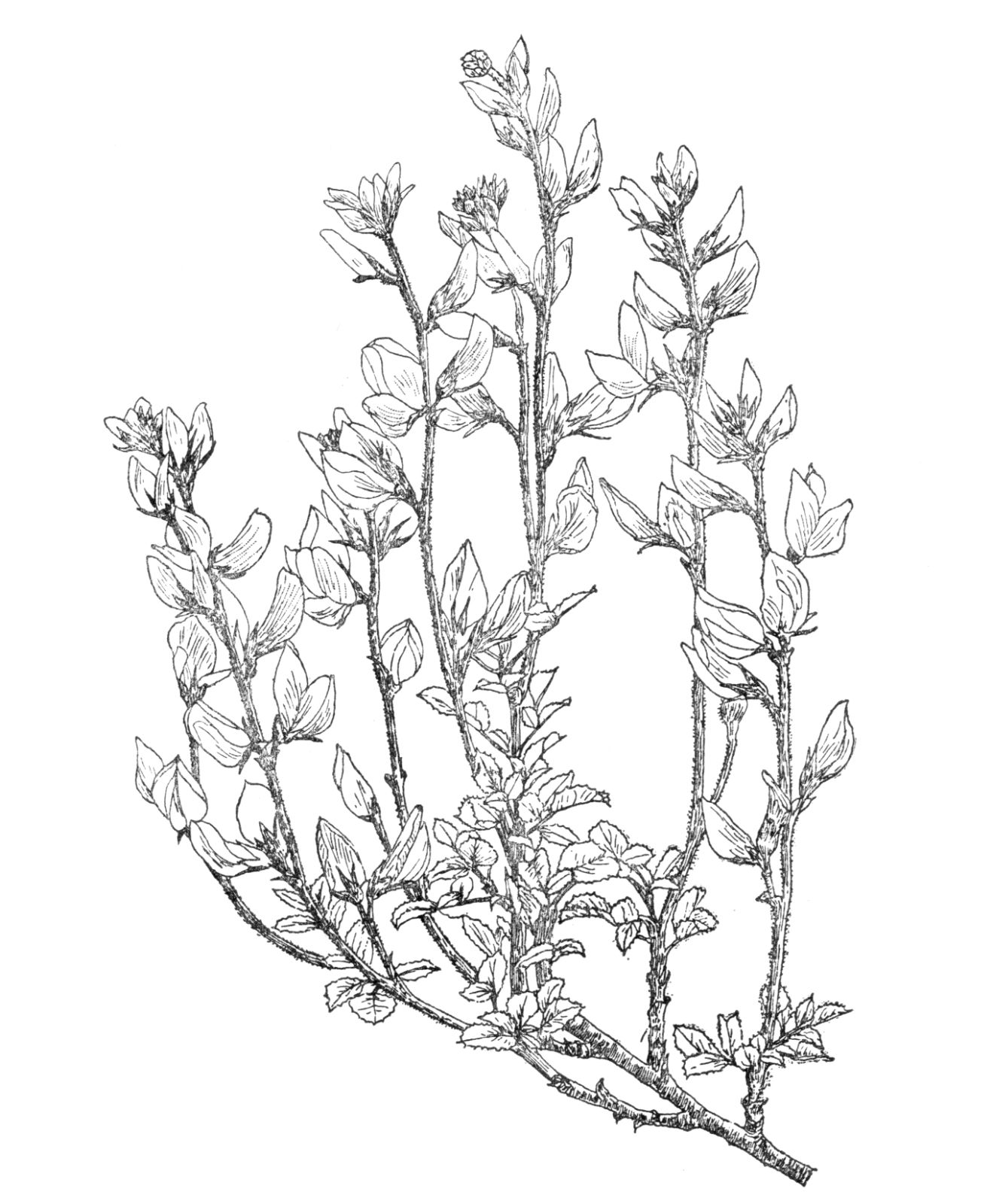Ononis
Sponsor
Kindly sponsored by a member of the International Dendrology Society.
Credits
Julian Sutton (2023)
Recommended citation
Sutton, J. (2023), 'Ononis' from the website Trees and Shrubs Online (treesandshrubsonline.
Family
- Fabaceae
Common Names
- Rest-harrows
A genus of about 88 species of annual and perennial herbs, subshrubs and small shrubs native to Europe, N & E Africa, the Canary Islands, and W & C Asia. Plant usually hairy, with both glandular and non-glandular hairs. Stems rounded in section. Leaves more or less deciduous, alternate, usually trifoliate, less often with a single leaflet, or imparipinnate with up to 9 leaflets; stipules clasping the petiole. Inflorescence a panicle, spike or raceme, axillary or terminal. Calyx bell-shaped or tubular, with 5 more or less equal teeth; tube usually much shorter than teeth. Corolla with 5 short-clawed lobes (banner, 2 wings, 2 forming the more or less beaked keel), yellow, pink or purple (rarely whitish). Stamens 10, the filaments of all united for part of their length to form a tube enclosing the style, dimorpphic, alternately basifixed and dorsifixed, the dorsifixed ones smaller and more ovoid. Ovary elliptic or oblong, hairy. Stigma terminal, capitate. Fruit an oblong or ovate dehiscent legume, with 1–many seeds. (Tutin et al. 1968; Devesa 2000; Cullen et al. 2011).
The perennial Rest-harrows belong in the awkward hinterland between shrubs and herbaceous perennials. Most species which gardeners have any real chance of encountering are woody at least at the base, with the current year’s growth dying back to a greater or lesser extent. They are undoubtedly beautiful as wild plants, with conspicuous pink or yellow flowers; some are definitely growable under sunny rock garden conditions, and many more would probably be possible there or in the alpine house if they could be obtained. Most are summer-flowering ‘useful in flowering later in the season than the bulk of hardy shrubs’ (Bean 1976). Serious horticultural books have tended to list selections from a group of about 12 species, but even the most experienced plantspeople are unlikely to have met more than two or three of these. We choose to describe all these 12 very briefly on a single page, ‘Representative Species’. A trawl of the online catalogues of botanic gardens in our European and North American areas turned up few records, mostly of O. spinosa, an indication of how little horticultural attention these plants get.
The centre of Ononis diversity is absolutely Mediterranean, in southern Spain and Portugal, along with adjacent parts of northern Morocco and Algeria. Complex patterns of variation and poorly-differentiated species suggest rapid, recent evolution in some groups (Rocha et al. 2018; Castro et al. 2019). Relatively few species are found beyond this area, in more northern and eastern parts of Europe, East Africa and western Asia.
Ononis belongs to Tribe Medicageae of the Fabaceae, along with Medicago and the entirely herbaceous genera Trigonella and Melilotus. Ononis stands out among them for its unusual stamens. They are monadelphous, that is they are fused by their filaments into a single group rather than two groups (diadelphous – often 9+1) as in many other peas. Additionally, each flower has two types of anther. Alternate ones are larger and attached to their filaments by the base, the others being smaller, more ovoid, and attached nearer the middle (Devesa 2000). The pink or purple petals of many species are also distinctive. Molecular evidence confirms the close relationship to Medicago and Trigonella, and suggests that Ononis is a natural, monophyletic group (Turini, Bräuchler & Heubl 2010). The ancestral Ononis species were probably perennial, with the annual habit (often linked to reduced leaves and dry coastal habitat) having arisen several times in the genus. A few of the more woody species have evolved from these annual groups. They include A. christii, found only on Pico de la Zarza on Fuertaventura, Canary Islands, and A. thomsonii, endemic to high altitude Cedrus atlantica forests in Morocco’s Atlas Mountains; such geographical and ecological islands are prime places for secondary woodiness to evolve. The widespread and variable A. spinosa is probably also secondarily woody (Turini, Bräuchler & Heubl 2010).
A much-used infrageneric classification (Širjaev 1932) may not be natural. The most thorough molecular study to date (Turini, Bräuchler & Heubl 2010) does not support his division of the genus into Section Natrix (flowers in panicles with 1–3 flowered branches; legumes oblong on deflexed pedicels, many-seeded) and Section Ononis (flowers in racemes or very condensed panicles; legume ovate or rhombic, erect or spreading, few-seeded), although many of his 22 Subsections may be monophyletic.
Flowers are the Rest-harrows’ main attraction in the garden. The ‘look’ of the plant in flower differs according to the type of inflorescence. At one extreme, many-flowered terminal inflorescences mean that flowers are clustered at the shoot tips, as in O. fruticosa. Few-flowered axillary inflorescences result in flowers scattered through the leafy parts of the plant, as in O. spinosa. Either can be attractive. The typical peaflower structure is usually associated with pollination by bees of various sorts, and this is true of Ononis where investigated (Vivarelli et al. 2011; Sánchez et al. 2017). The stamens are fused to form a tube around the style, these sexual organs together making a brush enclosed within the two partially fused lower petals (the keel). There are two lateral petals (the wings) and a larger, hooded upper petal (the banner or standard). A visiting bee forces the keel petals apart, pushing anthers and stigma up against the insect’s underside.
As a European genus, many species gained their scientific names early. Linnaeus’ (1753) generic name is derived from an Ancient Greek name for a plant mentioned by Theophrastus, which may or may not have belonged to this genus (Raven 2000). The common name Rest-harrow (and its French counterpart Arrête-Boeuf, an alternative to the usual Bugrane) presumably refer to the ability of the tough woody stem bases and rhizomes of O. repens (a somewhat dubious taxon, effectively rhizomatous forms of O. spinosa) to resist horse- or ox-powered cultivation.
A sunny position in well-drained soil is recommended for any species (Bean 1976); many will tolerate shallow chalk soils (Edwards & Marshall 2019). In areas at risk of significant summer rainfall, some of the dwarf species might better suit the alpine house than the rock garden or sunny border. Ononis are often propagated from seed, sown once ripe in autumn, or in spring, perhaps scarified to accelerate germination. As with Astragalus, root disturbance should be minimized when pricking out (preferably when very small) and planting. Soft or semi-ripe cuttings taken in summer should be rooted with bottom heat, enclosed (Huxley, Griffiths & Levy 1992; Bean 1976). Some species towards the herbaceous end of the range may be divided in spring.
The last full revision of Ononis (Širjaev 1932) makes heavy reading, at nearly 300 pages in German and Latin. Regional floras are more accessible. For Europe, covering the bulk of species, Flora Europaea (Tutin et al. 1968) and – in Spanish – the more recent Flora Iberica (Devesa 2000) are essential reading.


